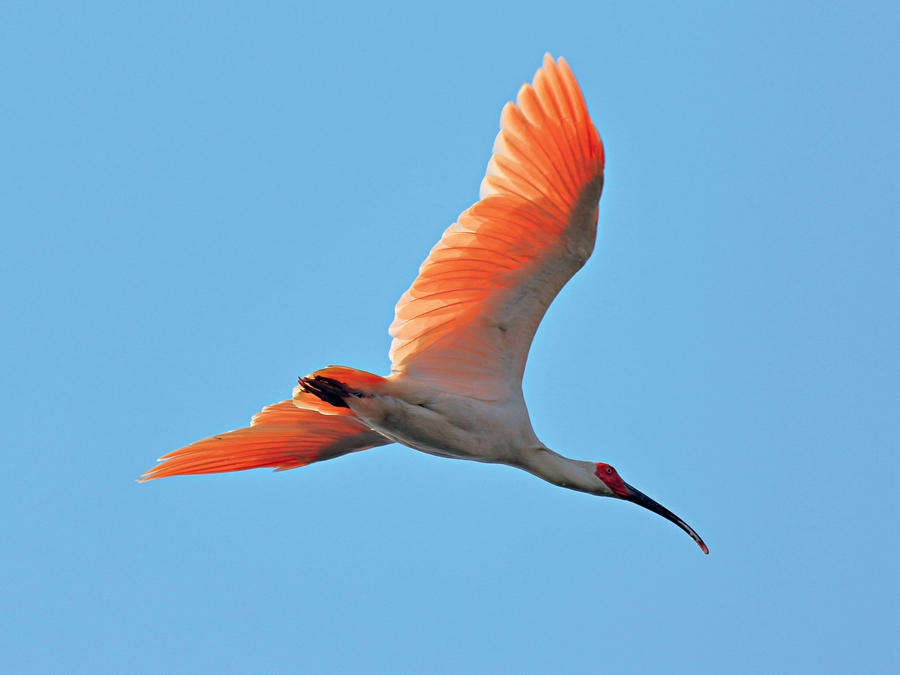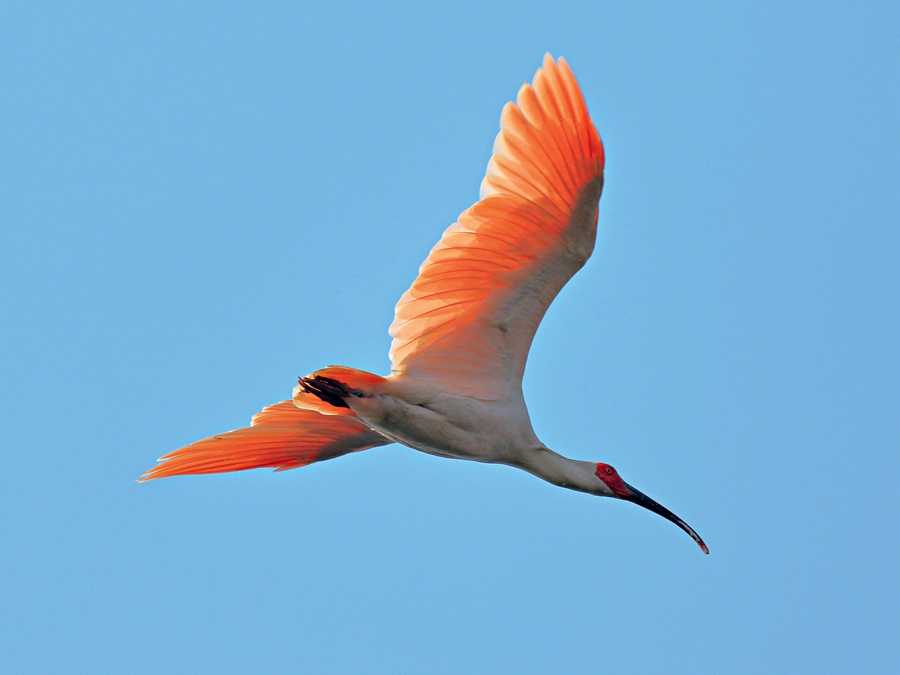An Endangered Species Rescued from the Brink of Extinction
China Today by Jiang Fumei,April 20, 2018 Adjust font size:

Spreading wings.
However, with the development of modern agricultural technology, the habitat for crested ibises dwindled sharply. The wide use of pesticides and chemical fertilizers led to less food for crested ibis and even poisoned a large number of the birds. In 1960, the crested ibis was labeled as an “internationally conserved bird” at the International Bird Protection Conference held in Tokyo. In 1963, scientists searched for crested ibises in the Far East but didn’t find any trace. In 1967, a conservation center for crested ibis was built in Sado Island, Japan. In 1975, the last crested ibis on the Korean Peninsula disappeared. In 1981, in order to rescue crested ibis from extinction, Japan captured all the remaining six crested ibises for artificial rearing, which denoted the extinction of wild crested ibises in Japan.
On May 18, 1981, after searching for over three years and trekking 50,000 km, Chinese scientists found two nestling ground and seven wild crested ibises in the mountain forest in Yaojiagou, Dadian Village, Yangxian County of Shaanxi Province. The conservation efforts have since initiated in China.
China drew on lessons from Japan in protecting crested ibises. The protection of crested ibises is carried out in and outside Yangxian County. Captive breeding was also adopted. In August 1981, Yangxian government designated a conservation area for crested ibis and set up laws to forbid mining, hunting and logging in the area. In 1983, the local government encouraged farmers to discard pesticides or chemical fertilizers in conservation area and expanded natural wetlands and winter paddy fields. In addition, the government solicited funds to build an ideal habitat for crested ibis by restoring over 230 hectares of natural wetland, renovating 100 hectares of winter paddy fields, planting 2,600 hectares of forests, and dredging 30-km-long ditches. In September 2001, a nature reserve at provincial level was built in Hanzhong, Shaanxi Province, which was listed a national-level nature reserve on August 9, 2005.
The artificial rearing of crested ibis started in Beijing Zoo in 1981, followed by Yangxian County in 1990. The year 1995 saw a breakthrough in captive breeding technology. In 2002, 30 pairs of crested ibises were brought from Yangxian in the southern slope of the Qinling Mountains to Zhouzhi County in the northern slope.
Thanks to these efforts, crested ibises were rescued from the brink of extinction. At present, there are over 13 conservation areas across China, including Shaanxi, Gansu, Beijing, Shanghai, Henan, Zhejiang, and Fujian. In Huzhou, Zhejiang Province, a group of wild crested ibises were born by the way of artificial incubation. By conservative estimate, now the population of crested ibises has exceeded 5,000, in which the wild number about 3,000.
The crested ibis also plays the role of a diplomatic envoy and has become a symbol of China-Japanese friendship – now in Japan there are about 200 crested ibises that come from China.

